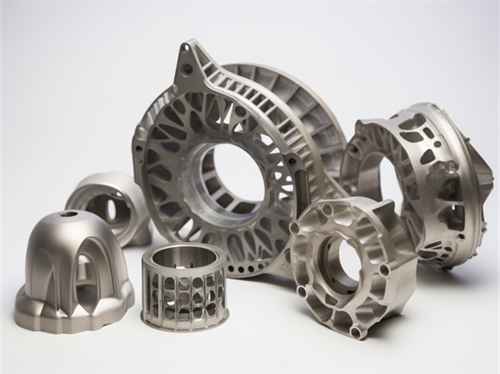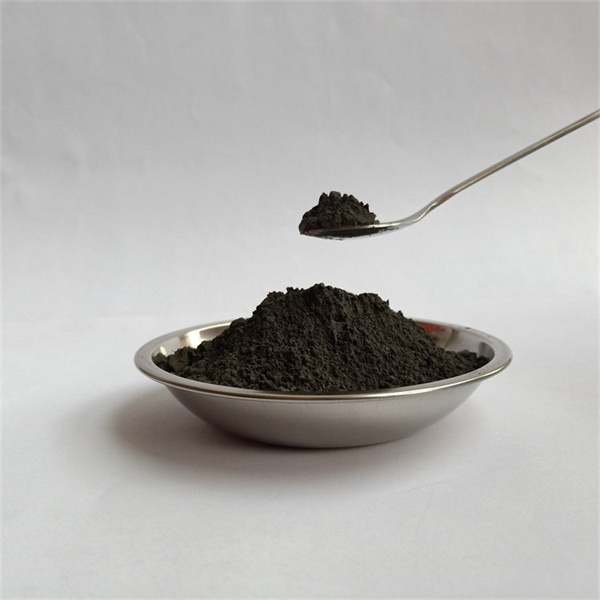선택적 레이저 용융 개요
선택적 레이저 용융(SLM)는 레이저를 사용하여 금속 분말 입자를 층별로 선택적으로 녹이고 융합하여 완전히 조밀한 부품을 제작하는 분말 베드 융합 금속 3D 프린팅 프로세스입니다.
SLM 기술의 주요 특성:
| 특성 | 설명 |
|---|---|
| 재료 | 스테인리스 스틸, 티타늄, 알루미늄, 니켈 합금과 같은 금속 |
| 레이저 유형 | 파이버, CO2 또는 다이렉트 다이오드 레이저 |
| 분위기 | 불활성 아르곤 또는 질소 대기 |
| 해상도 | 150μm까지 미세한 특징 구현 가능 |
| 정확도 | 0.2% 치수 이상의 부품 |
SLM은 항공우주, 의료, 자동차 및 산업용 애플리케이션을 위한 복잡한 맞춤형 금속 부품을 지원합니다.
선택적 레이저 용융의 작동 원리
SLM 인쇄 프로세스는 다음과 같이 작동합니다:
- 2D 단면 레이어로 분할된 3D 모델
- 파우더를 빌드 플레이트에 얇게 펴 바르기
- 레이저로 층을 선택적으로 스캔하여 분말을 녹입니다.
- 녹은 분말이 응고되어 서로 융합됩니다.
- 빌드 플레이트를 낮추고 그 위에 새 레이어를 펼칩니다.
- 전체 부품이 쌓일 때까지 프로세스 반복
융합되지 않은 파우더는 컴포넌트를 구축하는 동안 서포트를 제공합니다. 따라서 전용 서포트 구조 없이도 복잡한 지오메트리를 제작할 수 있습니다.

선택적 레이저 용융 시스템의 유형
몇 가지가 있습니다. SLM 시스템 구성:
| 시스템 | 세부 정보 |
|---|---|
| 단일 레이저 | 용융용 고출력 레이저 1개 |
| 멀티 레이저 | 다중 레이저로 빌드 속도 향상 |
| 스캐닝 시스템 | 갈보 미러 또는 고정 광학 장치 |
| 금속 분말 취급 | 개방형 시스템 또는 폐쇄형 분말 재활용 |
| 분위기 제어 | 아르곤 또는 질소로 채워진 밀폐형 빌드 챔버 |
멀티 레이저 시스템은 더 빠른 빌드를 제공하는 동시에 폐쇄 루프 파우더 처리로 효율성과 재활용성을 개선합니다.
선택적 레이저 용융용 재료
SLM에 사용되는 일반적인 금속 재료는 다음과 같습니다:
| 재질 | 혜택 |
|---|---|
| 알루미늄 합금 | 가볍고 강도가 좋은 경량 |
| 티타늄 합금 | 높은 중량 대비 강도 비율 |
| 스테인리스 스틸 | 내식성, 높은 인성 |
| 공구강 | 높은 경도 및 내마모성 |
| 니켈 합금 | 고온 내성 |
| 코발트크롬 | 생체 적합성 및 우수한 마모성 |
다양한 합금 분말을 통해 다양한 애플리케이션에 필요한 강도, 경도, 내열성, 생체 적합성과 같은 특성을 구현할 수 있습니다.
선택적 레이저 용융의 응용
SLM 금속 인쇄의 일반적인 응용 분야는 다음과 같습니다:
| 산업 | 애플리케이션 |
|---|---|
| 항공우주 | 엔진 구성 요소, 경량 구조 |
| 의료 | 맞춤형 임플란트, 보철, 기구 |
| 자동차 | 경량 부품, 맞춤형 툴링 |
| 산업 | 부품 경량화, 최종 사용 제품 생산 |
| 석유 및 가스 | 부식 방지 밸브, 웰헤드 부품 |
SLM을 사용하면 복잡한 맞춤형 금속 부품을 하나의 부품으로 통합하고 무게와 성능에 최적화할 수 있습니다.
선택적 레이저 용융의 이점
SLM 기술의 주요 이점:
| 혜택 | 설명 |
|---|---|
| 복잡한 기하학 | 유기적인 모양을 위한 무한한 디자인 자유 |
| 부품 통합 | 하나의 단일 구성 요소로 인쇄된 어셈블리 |
| 사용자 지정 | 맞춤형 부품 생산에 쉽게 적용 |
| 경량화 | 격자 구조 및 토폴로지 최적화 |
| 재료 절약 | 감산 방식에 비해 낭비 감소 |
| 후처리 | 지지대 제거 및 표면 마감이 필요할 수 있습니다. |
이러한 이점을 통해 더 적은 생산량으로 경쟁력 있는 리드 타임과 비용으로 더 높은 성능의 최종 사용 금속 부품을 생산할 수 있습니다.

선택적 레이저 용융의 한계
SLM의 한계는 다음과 같습니다:
| 제한 사항 | 설명 |
|---|---|
| 부품 크기 | 일반적으로 1m3 미만의 프린터 빌드 볼륨으로 제한됩니다. |
| 생산성 | 상대적으로 느린 생산 속도로 인해 대량 생산에 한계가 있습니다. |
| 후처리 | 지지대 제거, 가공, 마감이 필요할 수 있습니다. |
| 이방성 | 빌드 방향에 따라 기계적 특성이 달라집니다. |
| 표면 마감 | 인쇄된 표면이 비교적 거칠음 |
| 운영자 전문성 | 광범위한 프린터 경험이 필요합니다. |
이 기술은 복잡한 금속 부품의 소량에서 중량 생산에 가장 적합합니다.
SLM 프린터 공급업체
선도적인 SLM 시스템 제조업체:
| 회사 | 주목할 만한 시스템 |
|---|---|
| EOS | EOS M 시리즈 |
| 3D Systems | DMP 시리즈 |
| GE 애디티브 | X 라인 2000R |
| 트럼프 | TruPrint 1000, 3000 |
| SLM 솔루션 | SLM 500, SLM 800 |
| 레니쇼 | AM500, AM400 |
기계는 약 250 x 250 x 300mm의 소형 빌드 볼륨부터 높은 생산성을 위한 800 x 400 x 500mm의 대형 시스템까지 다양합니다.
SLM 3D 프린터 선택
SLM 시스템 선택 시 주요 고려 사항:
| 팩터 | 우선순위 |
|---|---|
| 빌드 볼륨 | 필요한 부품 크기에 맞추기 |
| 지원되는 자료 | Ti, Al, 스테인리스, 공구강과 같은 필요한 합금 |
| 불활성 가스 시스템 | 밀폐된 자동 아르곤 또는 질소 취급 |
| 레이저 기술 | 파이버, CO2 또는 다이렉트 다이오드 레이저 |
| 스캔 방법 | 갈보 또는 고정 미러 스캐닝 |
| 분말 처리 | 폐쇄 루프 재활용 선호 |
최적의 SLM 시스템은 애플리케이션에 필요한 재료, 빌드 볼륨, 속도 및 파우더 처리 기능을 제공합니다.
SLM 시설 요구 사항
SLM 프린터를 작동하려면 시설 조건이 충족되어야 합니다:
- 일반적으로 20~60kW의 전력 수준
- 약 20-25°C의 안정적인 온도
- 70% RH 미만의 낮은 습도
- 미립자 제어 및 금속 분말 처리
- 불활성 가스 공급 및 환기
- 방출된 미립자를 위한 배기 필터링
- 대기 모니터링 시스템
- 강력한 직원 안전 절차
SLM 시스템에는 전력, 냉각, 분말 처리 및 불활성 가스 공급을 위한 상당한 인프라가 필요합니다.
SLM 인쇄 프로세스 매개 변수
일반적인 SLM 인쇄 매개 변수:
| 매개변수 | 일반적인 범위 |
|---|---|
| 레이저 파워 | 100-400 W |
| 스캔 속도 | 100-2000 mm/s |
| 레이어 두께 | 20-100 μm |
| 해치 간격 | 50-200 μm |
| 스팟 사이즈 | 50-100μm |
| 스캔 패턴 | 각 레이어마다 번갈아 가며 회전 |
각 합금 분말에 대해 완전히 밀집된 부품을 얻으려면 이러한 매개 변수를 정밀하게 조정해야 합니다.
SLM 디자인 가이드라인 및 제한 사항
주요 SLM 설계 가이드라인은 다음과 같습니다:
| 가이드라인 | 이유 |
|---|---|
| 최소 벽 두께 | 열 축적 및 뒤틀림 방지 |
| 지원되는 오버행 | 지지대 없이 붕괴 방지 |
| 얇은 피처 피하기 | 용융 또는 기화 방지 |
| 힘을 위한 오리엔트 | 부하 방향에 맞게 최적화 |
| 지원 사용 최소화 | 후처리 간소화 |
SLM 프로세스에는 오버행 각도 및 최소 피처 크기와 같은 기하학적 요구 사항이 적용되며, 이를 고려해야 합니다.
SLM 후처리 요구 사항
SLM 부품에 대한 일반적인 후처리 단계:
| 프로세스 | 목적 |
|---|---|
| 지원 제거 | 소프트웨어에서 자동 생성된 지원 제거 |
| 분말 제거 | 내부 통로에서 남은 가루를 청소합니다. |
| 표면 마감 | 가공을 통한 표면 마감 및 거칠기 개선 |
| 스트레스 해소 | 열처리를 통한 잔류 응력 감소 |
| 열간 등방성 프레스 | 밀도 향상 및 내부 공극 감소 |
후처리 수준은 공차, 표면 마감 및 재료 특성에 대한 애플리케이션 요구 사항에 따라 달라집니다.
SLM 부품에 대한 적격성 테스트
SLM 구성 요소에 대한 일반적인 자격 테스트:
| 테스트 유형 | 설명 |
|---|---|
| 밀도 분석 | 가공 재료와 비교한 밀도 측정 |
| 기계적 테스트 | 인장, 피로, 골절 인성 테스트 |
| 메탈로그래피 | 미세 구조 이미징 및 결함 분석 |
| 화학 분석 | 구성이 사양과 일치하는지 확인 |
| 비파괴 | 공극에 대한 CT 스캔 또는 X-레이 검사 |
철저한 테스트를 통해 SLM 부품이 생산 애플리케이션에 투입되기 전에 요구 사항을 충족하는지 확인합니다.
장점 SLM 기술
선택적 레이저 용융은 주요 이점을 제공합니다:
- 주조 또는 CNC로는 불가능한 복잡하고 유기적인 형상
- 토폴로지 최적화를 통한 구조 경량화
- 단일 인쇄 부품으로 부품 통합
- 감산 방식에 비해 낭비 감소
- 사용자 지정 및 신속한 디자인 반복
- 금속 부품의 적시 생산
- 단조 소재에 근접하는 높은 강도와 경도
이러한 이점으로 인해 SLM은 산업 전반에 걸쳐 고부가가치 소량 부품을 온디맨드 방식으로 생산하는 데 적합합니다.
SLM 인쇄 도입의 과제
SLM 도입을 가로막는 장벽은 다음과 같습니다:
| 도전 과제 | 완화 전략 |
|---|---|
| 높은 프린터 비용 | 서비스 뷰로 활용, ROI 검증 |
| 재료 옵션 | 개발 중인 새로운 합금, 특수 공급업체 |
| 프로세스 지식 | 교육 프로그램, 학습 곡선 |
| 표준 | 개발 중인 부품 인증 프로토콜 |
| 후처리 | 개발 중인 자동화 프로세스 |
기술이 발전함에 따라 업계 전반의 재료, 장비, 교육 및 표준화 노력을 통해 이러한 장벽이 줄어들고 있습니다.
선택적 레이저 용융의 미래
SLM 기술의 새로운 트렌드:
- 500 x 500 x 500mm 이상의 대형 빌드 볼륨
- 빠른 빌드 속도를 위한 멀티 레이저 시스템
- 고온 초합금을 포함한 확장 합금
- 파우더 재활용성 및 취급성 개선
- 자동화된 지원 제거 및 사후 처리
- AM과 CNC를 결합한 하이브리드 제조
- 설계 최적화를 위한 전문 소프트웨어
- 공정 파라미터 및 부품 검증 표준화
SLM 시스템은 빌드 크기, 속도, 재료, 안정성 측면에서 계속 발전하여 더 많은 산업 애플리케이션의 생산 요구 사항을 충족할 것입니다.

핵심 사항 요약
- SLM은 금속 분말을 레이저로 선택적으로 융합하여 최대 밀도 3D 프린팅을 구현합니다.
- 미세한 디테일과 복잡한 형상을 구현할 수 있는 파우더 베드 융합 공정
- 항공우주, 의료, 자동차 및 산업 애플리케이션에 적합
- 스테인리스 스틸, 티타늄, 알루미늄, 니켈 합금과 같은 금속을 사용합니다.
- 부품 통합, 커스터마이징, 경량화의 이점 제공
- 제어된 대기와 강력한 분말 처리 시스템이 필요합니다.
- 인쇄된 부품에 상당한 후처리가 필요할 수 있습니다.
- 중저용량 생산 애플리케이션을 위한 선도적인 기술
- 머티리얼, 빌드 크기, 속도, 품질이 지속적으로 개선되고 있습니다.
- 고성능 인쇄 금속 부품 사용
선택적 레이저 용융은 주문형 맞춤형 금속 부품을 위한 산업 제조 솔루션으로 계속 성장할 것입니다.
자주 묻는 질문
| 질문 | 답변 |
|---|---|
| SLM과 호환되는 자료에는 어떤 것이 있나요? | 스테인리스강, 티타늄, 알루미늄, 공구강, 니켈 합금, 코발트 크롬 등 대부분의 용접 가능한 합금에 사용할 수 있습니다. |
| SLM 부품의 일반적인 정확도는 어느 정도인가요? | 대부분의 지오메트리에서 약 ±0.2%의 치수 정확도를 얻을 수 있습니다. |
| 어떤 후처리가 필요하나요? | 서포트 제거, 파우더 제거, 표면 마감, 응력 완화, 열간 등방성 프레싱이 일반적입니다. |
| 일반적인 SLM 결함이란 무엇인가요? | 다공성, 균열, 층 박리, 뒤틀림, 표면 마감 불량, 녹지 않은 입자. |
| SLM에는 어떤 종류의 레이저가 사용되나요? | 일반적으로 파이버 레이저, CO2 레이저 또는 고출력 다이오드가 사용됩니다. |
